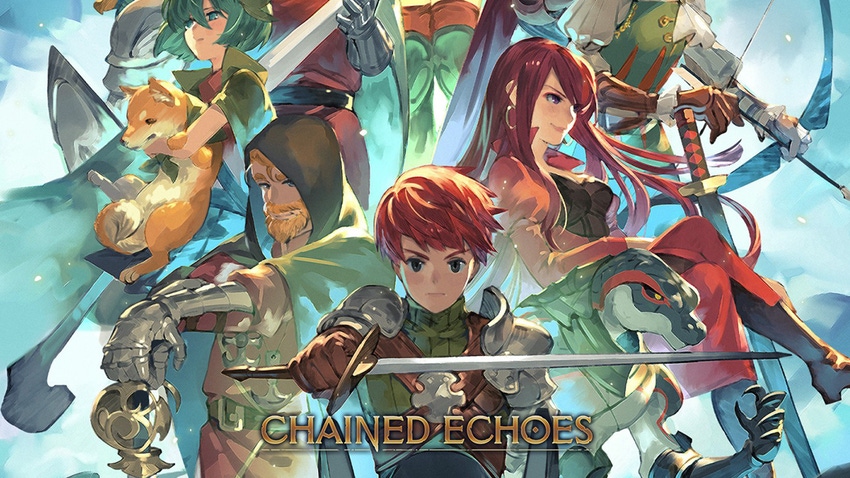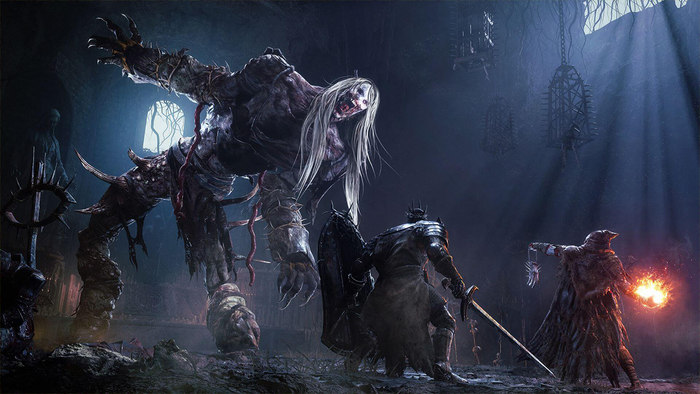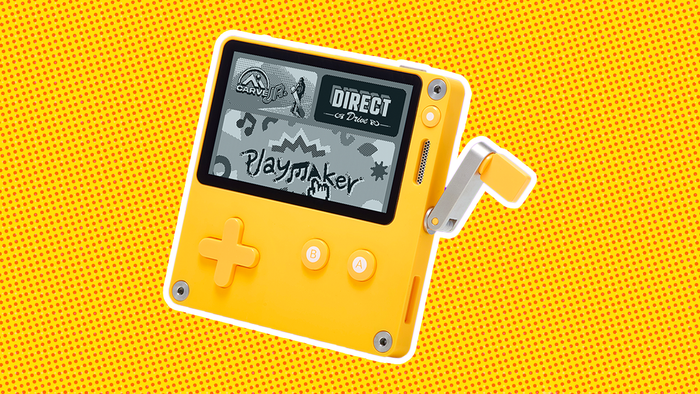How the solo developer made the JRPG of his dreams.

This interview has been edited for clarity
Released at the end of 2022, Chained Echoes is an indie RPG that aims to capture the heyday of classic JRPGs from the 16-bit SNES era. Thanks to rave reviews and easy access via Xbox Game Pass (for those wondering, it's also available on PC, Switch, and PlayStation) it has quickly become something of a hidden gem for players seeking a heady dose of nostalgia.
Although the game seemed to materialize out of nowhere in the wake of a typically busy blockbuster holiday release schedule, Chained Echoes was actually the result of a seven-year labor of love for solo developer, Matthias Linda–though he reckons it could have been simmering away for longer. Especially if you include his teenage tinkerings in game design with RPG Maker, a game making tool that originated from Japan but became popular in his home country, Germany.
Graduating with the unusual combination of Modern Japanese and Communication Design, Linda got a job at an agency working on animation related to e-learning. "While I was doing this, I was playing around again with RPG Maker but still not at a professional level," he says. "At some point I thought, why not try out something like Unity? So I did some tasks and it was surprisingly easy without having much background. When I was younger, I made a few websites where I did some simple coding for PHP, so I knew the basics."
An epic start
It was around then that the idea for an RPG that would eventually become Chained Echoes began to form. Although Linda admits he'd only made a few short games at that point, he did have experience with larger projects, with the budding creator having already penned lengthy crime fiction novels. "I was always the daydreaming type of guy," he says. "When I was younger, my little games were always created with worlds around them, which was why it was important for me to be the one writing the story for [Chained Echoes]."

Until now, Undertale was arguably the best known RPG made by a single developer (Toby Fox) and is, as one might expect, shorter than the average game in that genre. But Chained Echoes very much follows the grand narrative of a classic fantasy JRPG, with warring nations, an ensemble cast whose paths sometimes diverge, and two battle systems.
"People usually say start with a simple game, but I don't have much fun with small ideas. I like complex stuff, such as a lot of characters with different stories coming together," Linda explains. "I never intended to do it another way, so I had no choice but to go through with it."
GIF of the gab
Initially, Linda started developing Chained Echoes while also holding down a full-time job, meaning he was relegated to tinkering with the project on the evenings or weekends. There were also stretches when he simply had to step back, keeping him from making any headway at all. It was only with the launch of Chained Echoes' Kickstarter campaign in 2019 that he was able to fully commit to quitting his job and turning the project into a full-time endeavor. However, given Linda was a first-time developer making a retro-inspired JRPG on his lonesome, that was hardly a recipe for guaranteed success.
"In 2018 when I decided to concentrate on the game, I put a website online, I created my social media accounts, and I decided I would try to get followers for a year before launching a Kickstarter," he explains. "I had like 2,000 on two accounts and about 300 subscribers to a newsletter. There are no real rules that say how many followers you need, but I think you have to have some kind of basic visibility on social media [before launching]."

While some indies go as far as preparing a playable demo to more effectively sell their vision to backers early on, Linda admits it was too premature to share anything like that publicly. Instead, he relied on posting screenshots or short clips that showed how Chained Echoes was taking shape. "When I was working on something for the game, I always had in mind that it should be something that's easy to turn into a GIF so that I could show it off on Twitter," he says. "So, every time I thought I might work on something that wouldn’t be shown on Twitter or Kickstarter, I'd postpone it and work on cool animations or the map–aspects of the title that I could more easily showcase, even if the project wasn't complete or playable at that point.”
Despite the ambitious nature of Chained Echoes, Linda never really considered bringing collaborators into the fold–with the sole exception being Eddie Marianukroh, who served as the game's composer. "I don't know anything about music. I don't play any instruments. I have no experience or knowledge of composing music. So I knew from the get-go that I had to get someone to help me out there," Linda explains. "When it came to the other aspects, it was important that I handled both the story and gameplay myself. Programming was something I had to learn, and I actually did that while developing the game. In those moments where I might have turned to someone for help, I was instead able to buy items from the Unity asset store. For example, I thought pathfinding might be a little bit difficult for me, but I managed to get an asset for that."
JRPG inspirations
Backers were eventually able to try the game in an alpha and beta phase, but there weren’t any fundamental changes to the core gameplay as a result of early feedback, so Linda became increasingly confident he’d be able to keep his initial vision intact–one that didn't slavishly adhere to every facet of the 16-bit era JRPG. "I didn’t think too much about the old games. I just wanted to create my favourite JRPG," he explains. Random encounters are something he elected to leave in the past, with enemies instead visible on the field. Of course, that was also true of Square's 1995 classic Chrono Trigger, although Chained Echoes' combat presentation differs slightly.
"In Chrono Trigger, when you trigger a battle, characters can position left, right, below, or above the enemy, and that was too much work for me," he says. "All the battles in Chained Echoes are always from left to right, which is basically like Final Fantasy random battles but they take place in the same area. It's a lot smoother this way."
Linda's inspirations came not just from 16-bit JRPGs but also later titles. Indeed, his initial idea for Chained Echoes' battle system had been a real-time cooldown-based system inspired by Xenoblade Chronicles, while the game's unique Overdrive gauge system is actually taken from a mechanic in Final Fantasy X that shares the same name.

"The main character [Tidus] has this QTE where you have this bar and there's this cursor and it's going like this [gestures with fingers wagging back and forth] so you have to press the button at the right moment to get extra damage," he explains. "Somehow, I had the idea to incorporate this into a turn-based battle without the QTE thing, but I thought it would be cool to have the bar showing different areas and different effects on the battle, which is how the overdrive system came to be."
Layered on top of that is a Xenogears-style mech battle system, while there were also tentative plans to introduce a third battle system involving customisable airships, which all sounds very similar to Skies of Arcadia. In what's perhaps a good example of Linda's own discipline and critical distance, however, he decided to drop that feature. "It wasn’t because of time issues, but it was too much for the game. It would have felt too bloated having a third battle system in there," he says. "So I decided it wasn’t necessary. The game would be worse with the airship battles than without.”
Now that Chained Echoes is out, Linda is nonetheless continuing to add to the game–supplementing it with new features including a New Game Plus mode–while also working to honor additional backer rewards such as a physical art book. The proverbial finish line might have been crossed, but the rewards reaped after such a long journey mean that it won’t be long until Linda will be busy at work on a second game. According to the developer, he intends to make another RPG, but having already spent the best part of a decade playing the lone wolf role, this time he feels more confident about the possibility of bringing other people along for the ride.
As we wrap up, we ask Linda if he has any parting advice for other aspiring solo developers who might also be contemplating making a sprawling RPG, or something similarly grandiose. "It will take years, so you must be someone who isn't going to lose interest in something too easily, and someone who can work in a rather structured way, where a game's story is as important as gameplay or graphics," he says. "There's a lot of stuff that comes together at the end over a very long period of time. If you're this type of person I can say that everyone can make a JRPG as their first game if they want to."
Read more about:
FeaturesAbout the Author(s)
You May Also Like







